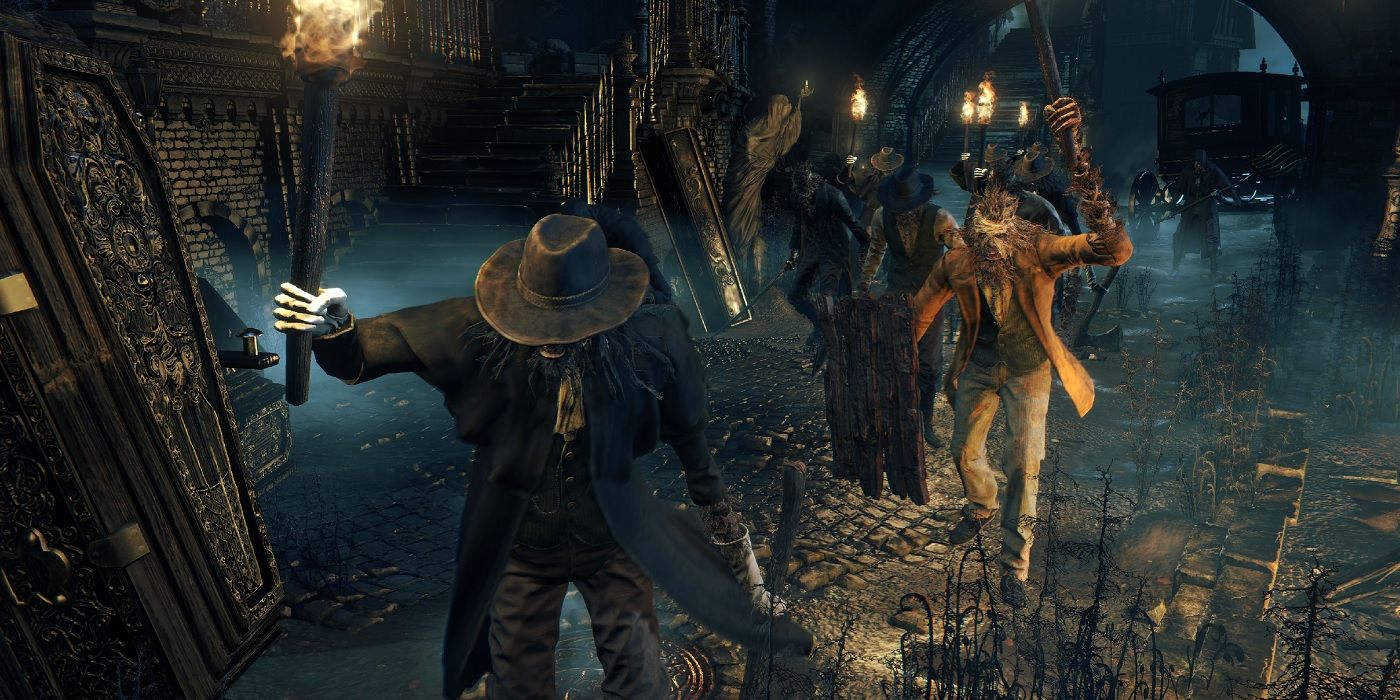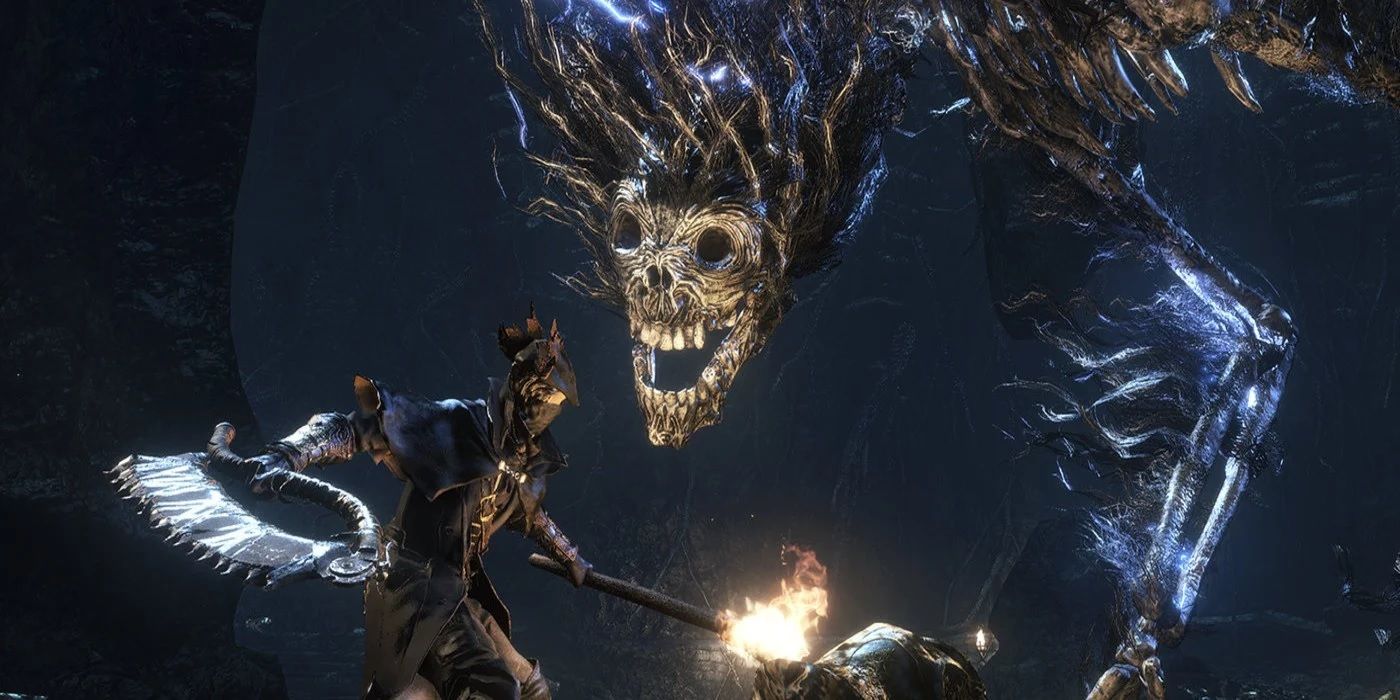Bloodborne 2 Only Needs To Make One Small Change To Beat The Original

In the past, From Software has always looked to push its games further towards both difficulty and polish with each new installment of a series or with each new IP. So when the developer finally gets to making Bloodborne 2, a lot of focus will have to be put into the few ways available to improve Bloodborne's mechanics in the highly anticipated sequel.
Looking at the original game, one game mechanic that can be improved upon in Bloodborne 2 is the one that separates it from other games in From Software's catalogue. Blood vials may have been one of few major flaws in Bloodborne, often being the cause of some grinding that would have been otherwise unnecessary if the game had stuck with refillable healing items.

As is often the case with a number of From Software's titles, the lore of the game tends to influence the game mechanics and vice versa in order to bring the two elements together and really place players deep in the game world. This is seen in Bloodborne through things as simple as the combat leaning away from shields and into dodging, because agility turned out to be more important than heavy armor against the beastly scourge. Similarly, blood is a finite resource in the central city of Yharnam, carefully distributed by the defunct Healing Church, meaning that players need to hunt down the remaining blood vials carried by enemies.
This can cause a pretty harsh problem for players if they end up having a hard time in any one area or against some of the brutally difficult boss fights throughout Bloodborne. While the player's supplies of blood vials dwindle as they attempt and re-attempt difficult encounters, they can come to the point where they run out of the highly necessary resource and can't continue forward anymore. The result is a heavy grind as players attempt to either earn blood echoes in order to buy more blood vials, or fight enemies that drop the item regularly, which in itself is risky when running around with little to no healing supplies.

Fixing this issue is actually pretty simple, just make it so blood vials are a replenishing resource like the Estus Flask in Dark Souls or the Healing Gourd in Sekiro. Healing sources like these have been a staple for the From Software formula since Dark Souls, and any Souls-like game that deviates often gets heavy backlash for not including the mechanic. This happened with games from other developers like Nioh, as well as with titles from within the main company like Dark Souls 2 where the Estus Flask wasn't replaced, but an emphasis was put on healing from a non-replenishing resource.
Of course, this feature doesn't automatically mean that the game is a dud, considering that the spiritual predecessor to these games didn't have an Estus Flask like healing mechanic and fans are still scrambling for a Demon's Souls remaster on PS5. However, forcing players into grinding to get healing items, while it can increase playtime for some players, ends up feeling like padding that didn't need to be there in the first place. The mechanic may not make or break the game, but for some players it can be the difference between considering some locations difficult or tedious, the later of which can ruin parts of even great games.

For many players, and certainly for From Software, developing the lore of these titles, from Bloodborne to Dark Souls, can easily be one of the most fascinating aspects of the game. So, changing the established lore of the original in order to alter and improve a mechanic for Bloodborne 2 can be a tricky situation as it can risk the continuity of the series or raise questions for the original. However, looking at the endings of Bloodborne can actually offer a way to move forward with a brand new healing mechanic in the form of Paleblood.
To quickly explain what this means, Paleblood is the blood of the celestial Great Ones in Bloodborne and seeking out these Palebloods lead to the discovering of great insights that both helped build and eventually lead to the downfall of Yharnam. One of the endings, however, has the player turn into an infant Great One, meaning that in one of the three possibilities for the story there is a Great One with both Paleblood and Beast Blood, with an optional touch of Vileblood. Both of these types of blood (or all three if the player took the Vileblood) have healing properties, and if a vial is made from the infant Great One it could have brand new properties.

Taking this route in the next game, where players aren't healed by the Healing Church's beast blood, but instead into the strange mix of bloods found in the infant Great One could lead to a more complex healing system. Similar to how most other things in Bloodborne are customizable, from hunter trick weapons to the caryll runes, this new fusion of multiple blood types could add a customization to how players heal. This is a concept that has actually been explored in another Souls-like game, The Surge, which allowed the player to use differing levels of replenishing healing, or to tie healing to a separate mechanic all together.
Equally taking notes from other companies, From Software's previous games can offer new opportunities for Bloodborne, like Sekiro's multiple refilling gourds are available in game that heal different status effects as well as health. Giving the new blood vials different properties depending on unlockable upgrades could open up to a much more fluid way to tackle certain obstacles, like a frenzy curing vial to combat the Winter Lanterns. Of course, this will take some consideration in order to keep the game in balance when the player can heal any negative status effect on demand, likely require a limit to what cures can be equipped at one time and the availability of upgrade.
Bloodborne is available now for PS4.

Post a Comment